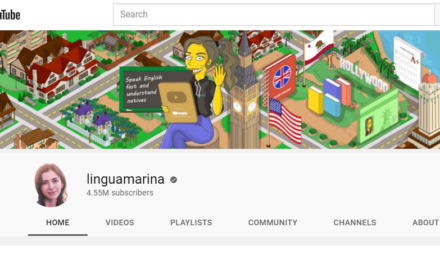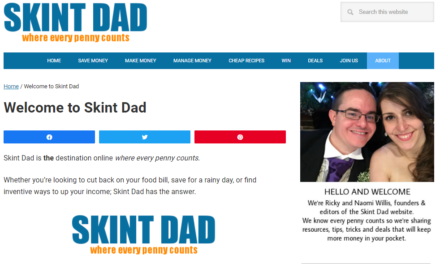One of the key elements of content marketing is demonstrating your company’s knowledge and expertise. But good content costs time and money.
Getting the most out of your content spend is essential in achieving a good ROI on investment. You can maximize your returns by upcycling your content.
What is content upcycling?
Upcycling content takes elements of your original content and expands on them to create brand new pieces across different platforms, styles, and media.
Upcycling is not recycling. Recycling content is all about taking something you’ve done and reproducing it in a new way. It’s handy if you’re posting content to different platforms, or as part of outreach.
It’s money for old rope. And that’s fine, because all writing is rewriting at the end of the day. But upcycling takes your content further.
We use the term “upcycling” because it means taking existing content and adding to it in order to provide continued, up to date, value.
Benefits of upcycling content
- Get better ROI on your content
- Produce better content, faster
- Keep existing content up to date
- Tailor content topics to specific platforms
- Explore niche topics in detail
- Provide context for past and future content
- Create topic clusters that can be used to support SEO
What’s the best content to upcycle?
Not all content is created equally. As you learn about new content strategies, old pieces of content fall by the wayside. As your company grows and adjusts its focus, some content becomes irrelevant or unfit for purpose.
Develop a strategy for identifying the best type of content. Review your portfolio of content and identify content that is:
- timeless
- full of rich insights
- has room to grow
Evergreen content provides lasting value
Evergreen content is ideal for upcycling. Its very nature means that it will always be relevant to your audience. This could be a guide to specific laws or compliance, a product page, or a downloadable guide.
Keeping this sort of content up to date and high in value will keep readers coming back years after publication.
Time-sensitive content doesn’t provide as many opportunities for upcycling. News pieces, unless it’s some kind of on-going saga, have a shelf life of a few days at best. Once people have lost interest in the topic, expansion is pretty pointless.
Content that has consistently low levels of traffic and few keywords to expand is hard to justify putting the time into from an SEO perspective.
Insights are achieved by leveraging your expertise
The best content for upcycling should have some substance to it. Whether that’s actionable advice, rich data or highly searched content, the depth of the content is where the value lies.
Today’s content marketing focuses on data much more than it did 5 years ago. If you can back up what you’re talking about with data, your content is more authoritative. You can also use that data within different contexts to produce new content.
There is always more to talk about
Some content (in fact, most content) is never finished. It always has room to grow. A basic test is to look at the headings in a piece of blog content.
This blog is broken up into 4 sections. Upcycling this piece could involve expanding on each subject and turning it into an additional piece of content.
Upcycling content makes it easy to add new information and insights to what you originally wrote in order to make it fresh and appealing.
How to Upcycle Existing Content
Upcycling content is an efficient and cost-effective way to improve the value of your offering to your audience in a way that’s all but guaranteed to succeed.
Why? Because you should only upcycle content you know has value or is showing popularity. There’s no need to put time and effort into content that didn’t work.
Upgrade your content
The key to adding new content is to make sure that it’s valuable to the audience. Don’t add content for content’s sake. Make sure it’s insightful, informative or entertaining. Preferably, make it all three.
If something new is discovered, or something has changed relating to a topic you’ve already written about, add it onto your existing content.
You can then either re-post it or promote it on your marketing channels again with the new info. Then you can produce a smaller, standalone piece of content focused on that new information.
Making regular updates to your existing content means that, eventually, you’ll have the richest source for that topic on the internet.
Research has shown that longer-form content gets better engagement from users and seems to be considered more favorably by Google.
When updating content, make the newer sections easy to find for returning visitors. Add a contents section with anchor tags to the content, or add your update above the existing content.
Change formats
Different content suits different formats. But what you might find is that elements of your content can be used in a variety of ways with a little bit of tweaking.
For example:
- Turn a blog into an infographic
- Make a video out of an infographic
- Take the audio from your video and expand it into a podcast
- Write up the transcript of that podcast and turn it into a blog
Add Functionality
If you’ve identified a piece of content that’s popular, find ways to make it more useful.
- If you’re talking about ways to make a decision, build an interactive quiz
- If the content discusses things that can be measured, build a calculator
- Use an interactive application to make tables and lists more engaging
And extra functionality isn’t just helpful to your users. It also makes your content more sharable. People love having tools they can use.
For example, we wrote a piece about the importance of title tags on web pages. It’s full of interesting insight, but it lacked practical application. So, we made a tool that takes all the elements explored in the blog and gives users a hands-on experience.
A content upcycling strategy is an important element of content marketing. Don’t invest time in a tool or an application that only applies to one piece of content if you’re unsure whether it will succeed.
Creating content costs money. And so does upcycling it. So, create the content as best you can with the resources available, then invest more time to create additional functionality once your data shows that the content is valuable to your audience.
Upcycling content like this will give you better returns on investment, increased search traffic, and brand awareness. Remember: it’s all about adding value.






